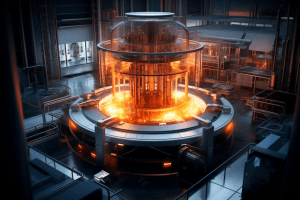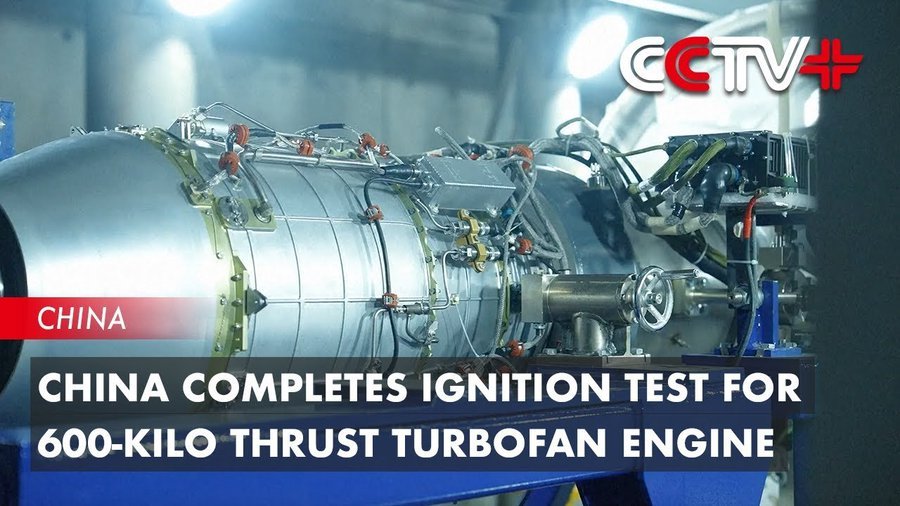Chinese Tech
It is now a different world. It is almost an impossible task to select main technology advances in China as they roll out so fast and cover the spectrum, medical, manufacturing, space (thousand sails project which will be bye bye Starlink), electric vehicles, electric flying vehicles, high speed trains, aviation, construction methodologies at an unbelievable pace, power generation, military technologies and even a new robot chef for households. Robotics are huge and I read about this one mine, high up in inhospitable mountain terrain that runs purely on robotics. The other very interesting data point is that the state owned enterprises are equally productive compared to the private enterprises and in some cases outclass the private sector. Here are just a few:
Stunning drone, light and fireworks show for the new year
In China, they are preparing for their new year.
This drone dragon is amazing. pic.twitter.com/6o8UsUvGEv
— Chay Bowes (@BowesChay) January 4, 2025
State owned AECC has announced that it has test-fired its new 1,322-pound (600-kilogram) thrust turbofan engine for the first time, entirely with Chinese parts⬇️
According to its developers, the new engine can reach altitudes above 49,213 feet (15,000 meters) and reach speeds exceeding 0.8 Mach. Other standout engine features include long endurance, low fuel consumption, and high reliability.
The engine will most likely be used to boost domestic high-ended unmanned aerial vehicles (UAVs). This would likely include China’s 1.5- to 4-ton categories of military or civilian UAVs.
China beats Starlink with 10x faster 100 GBPS space ground laser transmission
Chang Guang Satellite Technology, the company behind the Jilin-1 constellation did this. Jilin-1 is reported to be the world’s largest sub-meter commercial remote sensing satellite network
Chuang Guang Satellite technology is a state owned enterprise, managed by Jilin’s provincial government and the Changchun Institute of Optics, Fine Mechanics and Physics.
The data was transmitted between a mobile truck-based ground station and one of the 117 constellation satellites in Earth’s orbit.
“Musk’s Starlink has revealed its laser inter-satellite communication system but hasn’t deployed laser satellite-to-ground communication yet. We think they might have the technology, but we’ve already started large-scale deployment,” Wang Hanghang, the company’s head of laser communication ground station technology said
The company has plans to deploy these laser communication units across all satellites in the Jilin-1 constellation to improve their efficiency, with a goal of networking 300 satellites by 202
With technological advancement, satellites are getting smarter and better at capturing detailed information. However, sending all that data back to Earth using traditional methods is becoming a bottleneck.
Satellite communication, especially with lasers, is a more efficient and affordable solution. For this reason, Chang Guang Company decided to focus on laser communication technology in 2020.
Chang Guang developed a compact laser communication terminal — roughly the size of a backpack — capable of transmitting data both between satellites and from space back to Earth. This advanced terminal was incorporated into the payload of a satellite (designated Jilin-1 02A02) launched in June 2023.
Since the ground station is mounted on a vehicle, it can be moved to avoid bad weather and turbulence, making the data transmission more reliable. Multiple receiving stations will be established across China to improve remote sensing image data acquisition efficiency.
In the last few years, the company made rapid progress in developing high-speed laser communication technologies — both for space-to-ground and inter-satellite data transmission. For instance, the system had previously achieved a 10Gbps data transfer rate from space to Earth in October 2023.
This latest achievement of 100Gbps transmission rate is said to be equivalent to transmitting ten full-length movies within a “single second.”
This development in satellite-to-ground laser communication will significantly enhance China’s space capabilities. It will pave the way for improved satellite infrastructure, including navigation, 6G internet, and remote sensing.
Thorium molten salt reactor
 In 2025, China plans to start building a demonstration thorium-based molten-salt reactor in the Gobi Desert. The 10-megawatt reactor project, managed by the SINAP, is scheduled to be operational by 2030
In 2025, China plans to start building a demonstration thorium-based molten-salt reactor in the Gobi Desert. The 10-megawatt reactor project, managed by the SINAP, is scheduled to be operational by 2030
The project follows a 2-MW experimental version completed in 2021 and operated since then. China’s efforts put it at the forefront of both thorium-based fuel breeding and molten-salt reactors. Several companies elsewhere in the world are developing plans for this kind of fuel or reactor, but none has yet operated one.
Thorium-232, found in igneous rocks and heavy mineral sands, is more abundant on Earth than the commonly used isotope in nuclear fuel, uranium-235. But this weakly radioactive metal isn’t directly fissile–it can’t undergo fission, the splitting of atomic nuclei that produces energy. So it must first be transformed into fissile uranium-233. That’s technically feasible, but whether it’s economical and practical is less clear.
The attraction of thorium is that it can help achieve energy self-sufficiency by reducing dependence on uranium, particularly for countries such as India with enormous thorium reserves. But China may source it in a different way: The element is a waste product of China’s huge rare earth mining industry. Harnessing it would provide a practically inexhaustible supply of fuel. Already, China’s Gansu province has maritime and aerospace applications in mind for this future energy supply
The Chinese Academy of Sciences’ environmental-impact report states that the molten-salt reactor core will be 3 meters in height and 2.8 meters in diameter. It will operate at 700 °C and have a thermal output of 60 MW, along with 10 MW of electricity.
Molten-salt breeder reactors are the most viable designs for thorium fuel, says Charles Forsberg, a nuclear scientist at MIT. In this kind of reactor, thorium fluoride dissolves in molten salt in the reactor’s core. To turn thorium-232 into fuel, it is irradiated to thorium-233, which decays into an intermediate, protactinium-233, and then into uranium-233, which is fissile.
During this fuel-breeding process, protactinium is removed from the reactor core while it decays, and then it is returned to the core as uranium-233. Fission occurs, generating heat and then steam, which drives a turbine to generate electricity.
China will unveil a 450 km/h (280mph) bullet train in 2025
The CR450, or the “Fuxing” (Rejuvenation) 450 is set to start commercial operations this coming year. The CR450, lighter and more efficient than its predecessor
The CR450 has a sleek, arrow-like design with decorative cockpit lights. The train will operate at speeds of 248 mph (400 km/h) during commercial runs, significantly faster than the current CR400 trains. The CR450 also boasts a 20% energy reduction and improved braking.
Reports said the train can essentially cut travel time from Beijing to Shanghai from the current four hours, to just 2.5 hours. It’s tipped to become the world’s fastest commercial train when it starts operations next year.
 From 1976 til 2024, an ardous journey of 48 years
From 1976 til 2024, an ardous journey of 48 years
China has finally achieved it’s dream of realizing the “Four Modernizations”
The four areas of modernization are agriculture, industry, science and technology, and national defense
Left: Poster titled “Strive to achieve the four modernizations”, 1976
Right: Large wheat combines farming in front of high-rises in Suzhou, 2024
China rolls out world’s first military-proof 5G that can connect 10,000 army robots
China has unveiled the world’s first mobile 5G base station, which, after passing rigorous tests, is now poised for deployment on the battlefield. Jointly developed by China Mobile Communications Group and the People’s Liberation Army (PLA), it can provide unprecedented high-speed, low-latency and extremely secure and reliable data exchange services to at least 10,000 users within a 3km (1.8 mile) radius.
Even when PLA troops are advancing at 80km/h (50mph) in complex terrains, such as mountains or cities, and are subjected to electromagnetic interference, the system can still maintain an uninterrupted total throughput of 10 gigabits per second and a latency of less than 15 milliseconds.
The following one I questioned simply because it stretches the imagination.
China tests supersonic engine to fly passengers from Beijing to New York in 2 hours
The JinDou400 RRDE is less than 30 centimeters (11.8 inches) in diameter and less than 3 meters (9.8 feet) in length, produces an amazing thrust of about 880 pounds (400 kilograms)
The novel design does not require compressors or turbine parts because it produces thrust by shock waves from detonation combustion, unlike conventional rocket or jet engines. This improves the engine’s thrust-to-weight ratio, lowers expenses, and streamlines the engine’s structure.
This Ram-Rotor Detonation Engine (RRDE), is a hypersonic engine developed by Tsinghua University that combines a rotary detonation engine with a rotor compressor inspired by a ramjet. Low start-up speeds and discontinuous thrust in current detonation engines are problems that the RRDE solves by providing continuous thrust and increased efficiency.
Using helical blades inside a stationary casing, the engine’s rotor compresses, ignites, and expands fuel and air in a single, compact unit, minimizing shock waves for better performance. The RRDE might greatly improve the viability of high-speed travel and hypersonic aircraft by operating at different speeds by varying the rotor speed.
The jet’s initial ascent is powered by a booster, which separates in midair and enables the aircraft to travel at supersonic speeds. It decreases to subsonic speed as it gets closer to its objective, then turns on its liquid rocket engine to decelerate and land vertically.
According to SCMP, Space Transportation has conducted multiple tests to refine the jet’s active deceleration and vertical landing capabilities, advancing its ambitious goal of redefining high-speed civilian air travel.
The company aims to launch a supersonic passenger aircraft capable of speeds up to Mach 4 by 2027. The ambitious timeline sets the stage for the first commercial high-speed, point-to-point transport flight by 2030.
China produces green hydrogen from seawater
State-owned Sinopec has completed a seawater hydrogen production research project at its Qingdao Refinery. The project directly electrolysed seawater to produce green hydrogen, claiming to achieve an output of 20m3 per hour.
Adopting a “factory-based” operation model, the electrolyser was powered by part of the renewable energy from the refinery’s floating solar PV power station. Hydrogen produced by the project was fed into the refinery’s pipeline network for use in refining processes and hydrogen-powered vehicles.
Sinopec says it overcame such challenges through a collaboration with the Dalian Institute of Petroleum and Petrochemicals with “specialised equipment innovations and unique process designs.” These included chlorine-resistant electrode technology, high-performance electrode plate design and a seawater circulation system.
Source: Sinopec produces green hydrogen from seawater at Qingdao Refinery – H2View
Green hydrogen is a clean energy source that only emits water vapour and leaves no residue in the air, unlike coal and oil.
China has developed a way to extract Uranium using candle wax
This innovation has the potential to revolutionize the nuclear power industry by unlocking a virtually limitless source of fuel, powering nuclear reactors through the ocean
Nuclear power plants rely on uranium to generate electricity. However, scientists estimate that current land-based uranium reserves, which equal 7.6 million tonnes, can only sustain nuclear energy demand for about a century.
The oceans hold approximately 4.5 billion tonnes of uranium – that’s about 1,000 times more than what’s found on land. This immense reserve could potentially power the world for over a millennium, offering a sustainable solution to the growing demand for clean energy.
However, extracting uranium from seawater presents a significant challenge. Uranium is present in very low concentrations in the ocean, making it difficult to isolate efficiently. A team of researchers at the Dalian Institute of Chemical Physics in China has developed a novel and cost-effective method to extract uranium from seawater.
While extracting uranium from seawater has long been a challenge due to its extremely low concentration, this new method, using highly absorbent materials and a common household item, could finally make it a viable reality.
ANOTHER BREAKTHROUGH! China’s ‘explosive’ ironmaking breakthrough achieves 3,600-fold productivity boost
A new method for making iron is not only faster and cheaper, but also better for the environment, reducing iron making from 6 hours to 6 seconds!
After more than a decade of intensive research in China, a new ironmaking technology is poised to revolutionise the global steel manufacturing industry. The method involves injecting finely ground iron ore powder into an extremely hot furnace, triggering an “explosive chemical reaction”
The result is a display of bright red, glowing liquid iron droplets that rain down and collect at the bottom of the furnace, forming a stream of high-purity iron that can be directly used for casting or “one-step steelmaking”.
Known as flash ironmaking, the method “can complete the ironmaking process in just three to six seconds, compared to the five to six hours required by traditional blast furnaces”
This equates to a 3,600-fold or more increase in the speed of ironmaking. The new method also works exceptionally well for low or medium-yield ores that are abundant in China, according to the researchers.
According to calculations by Zhang and his colleagues, the new technology could improve the energy use efficiency of China’s steel industry by more than one-third. As it eliminates the need for coal entirely, it would also enable the steel industry to achieve the coveted goal of “near-zero carbon dioxide emissions”
China’s steel production capacity already exceeds the combined output of the rest of the world, providing it with a significant advantage in key industries like high-speed rail, shipbuilding, and car manufacturing. However, its reliance on blast furnace smelting processes, which consume large quantities of coke derived from coal, poses a significant challenge to achieving China’s ambitious carbon reduction goals.
One of the major technical hurdles for flash iron making is the ore-spraying lance, which must effectively disperse iron ore in a high-temperature, highly reducible tower space with a large specific surface area to initiate the necessary chemical reaction.
Zhang’s team has developed a vortex lance that can inject 450 tonnes of iron ore particles per hour. A reactor equipped with three such lances produces 7.11 million tonnes of iron annually. As per the paper, the lance “has already entered commercial production.”
Although the concept of applying this process to iron making originated in the US, it was Zhang’s team that developed a flash smelting technology capable of directly producing liquid iron. They obtained a patent in 2013 and spent the next decade refining the method.
Government statistics reveal that the success rate for new technologies that undergo pilot testing in China exceeds 80%.
MAJOR BREAKTHROUGH! China develops biodegradable sponge capable of removing 99.8% of microplastics from water
Containing low-cost and easily accessible raw materials for mass production, the sponge is expected to be applied widely to tackle microplastic pollution
According to Deng Hongbing, a professor from the School of Resource and Environmental Sciences, Wuhan University, who led the research team, the two raw materials used in making the sponge, squid bone and cotton, are easy to obtain and available at low cost, making the biomass fibrous sponge an effective and cost-efficient solution to address the complex issue of microplastic pollution in water
The sponge developed by using chitin extracted from squid bone and cotton cellulose can adsorb various common microplastics – small pieces of plastic less than 5 millimeters in length – from food packaging, textiles, and other industrial products.
The research team evaluated the fibrous foam’s performance using samples from four typical water sources including irrigation water, lake water, seawater, and pond water.
They found that the adsorption capacity of the material was basically unaffected by inorganic particles, heavy metals, organic pollutants, or microorganisms in the water, confirming its stability in real aquatic environments.
Large-scale production of this sponge is highly feasible, as its raw materials are simple to obtain, and the equipment required for its production, which includes freeze dryers and mechanical stirrers are widely available
If the large-scale production of the biomass fibrous sponge proves to be successful, the sponge is expected to be applied in large-scale water treatment or household water purifiers in the near future.



https://modernsurvivalblog.com/emp/china-cutting-edge-emp-weapons/ https://www.china-arms.com/2024/05/type-041-mini-nuclear-submarine-unlimited-endurance/ All went quiet on the tech for the first link years ago, or perhaps my reading changed. My guess for the second is it’s ‘cold fusion’ or LENR deemed to be pseudoscience by most, and whilst that steers academic scientists away it never affects engineers exploring actual refinements.… Read more »
okay, my links never…seldom so routine to be never…but i will try (if it doesn’t link i apologize & trust those curious will google:
scmp:
The giant sphere that china hopes will track elusive neutrinos
https://www.scmp.com/news/china/science/article/3282118/giant-sphere-china-hopes-will-track-elusive-neutrinos?module=inline&pgtype=article
And here is two more – this does not end lol. China PLA Eastern Theater Command releases New Year MV “We’re all Chinese” shows advanced armaments https://www.youtube.com/watch?v=pjIQAE5wyrw Take a look at a few comments there. Friday the US again passed something or another to ban Chinese drones. Its like trying… Read more »
“…because it stretches the imagination.”
dear, amarynth, when i first met my embedded beloved i said something similar & he embraced me…’dear, emerson, if it doesn’t—is it worth pursuing?’
thank you, amarynth, for this trove! i search xinhua every morning to discover what marvels chinese researchers & teams have just published. i forward them to my gp…3 or 4 yrs ago he made a few comments on china & rather than engage i simply began to share 1 or… Read more »
Agreed Emersonreturn: and thank you Amarynth for this inspiring compedium. It makes my heart soar and want to suggest that, although this is an exclusively “technical” report, let’s not overlook the fact that the long range implications of these wonderful mutually reinforcing breakthroughs can have for the uplifting of the… Read more »
I posted an image for you that I came across while looking at the tech stuff.
blessings, dear snowy.
That is a wonderful thing to do. I’ll do more of these as time allows.
Oh, please, amarynth, when time allows, whatsoever you share will inexpressibly effect change in our world as butterfly wings gracing a pond
Hearts and spirits awakening together unite the world – Blessings indeed to all here